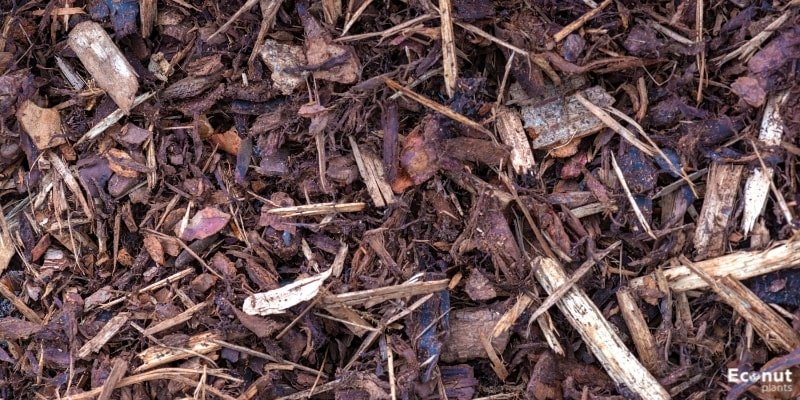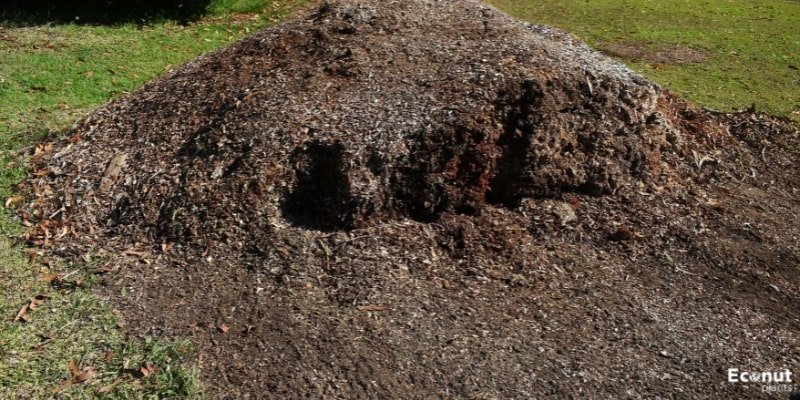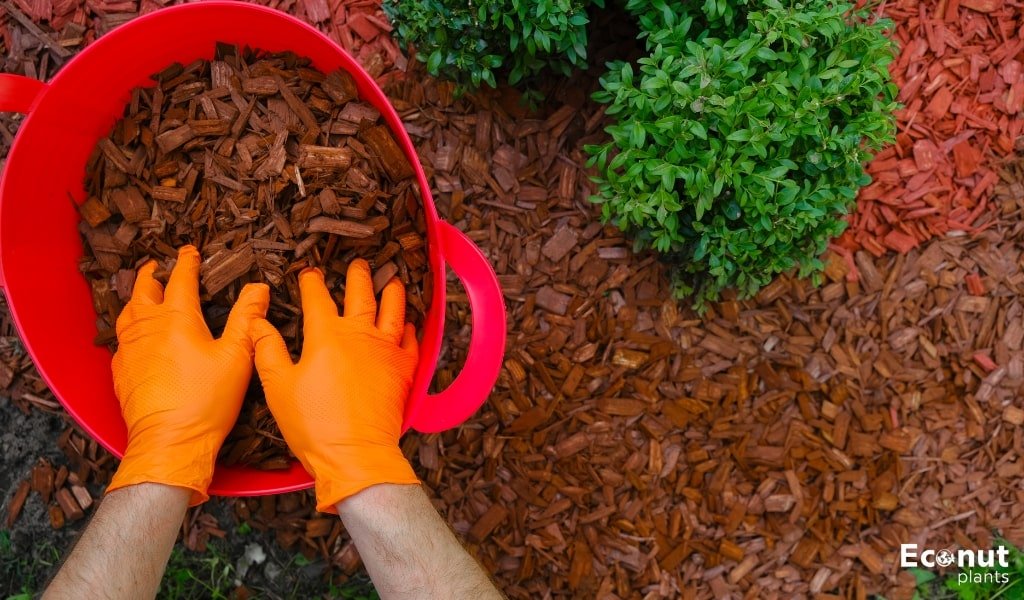Wood Chip Mulch is an organic mixture that contains the leftovers of dead plants and trees. The food item that bears the label “organic,” indicating that no pesticides were used during manufacture, differs from this one.
Organic material degrades over time, which is one of its primary qualities. Yes, this is what you want to happen to your wood mulch. What exactly is wood chip mulch, even if it’s often recommended? Is it beneficial to your garden? We discuss this subject!
What Is Wood Chip Mulch?

Here, we’ll break down this important question for you. To ensure that your chosen garden receives the right nutrients, it’s critical to understand which mulch types are accessible to you and to apply the right ingredients.
Arborist Chip Mulch
This item contains chips that arborists or tree-care businesses in the area left behind. This can include the roots, branches, leaves, blooms, berries, and other tree elements, as well as any portion that has been removed by an arborist or service.
We used a wood chipper to treat this natural and organic material. Arborists typically use the extra wood from tree care services to generate wood chips. This is sometimes new timber, and other times it’s old trees. In regions with a high concentration of orchards, arborist chip mulch is also frequently available.
Bagged Wood Chip
This is usually available at your neighbourhood hardware store or plant nursery. Tree waste that has been chopped into 2- to 3-inch pieces for mulching. It could consist of mass-chipped wood or natural, organic tree materials straight from a lumberyard or tree service.
Packaged wood chips are usually harvested wood, not newly planted. But if you purchase these, you’ll also receive plastic bags, which you ought to discard at the closest dump.
Modified Wood Chip
These can be wood chips in bags that have undergone a process to lessen their flammability. To keep weeds and insects out of your garden, you can treat them with insecticides and herbicides.
This material is often used when a homeowner association decides on a mulch colour that they like. Sometimes they reflect light or have a particular tint. They might also contain chemicals in addition to organic materials.
Bark Mulch
Bark mulch is made up of many types of shaving tree bark. Trees and arborists provide direct access to the majority of these. Other resources include lumberyards and furniture manufacturers, although they’re not the only ones.
This mulch is flake-based and absorbent. Gardening’s small grains may appear wonderful, but they tend to stick together quickly and often contain slivers.
Shredded Wood Mulch
This is what you’ll find in community gardens. The bulk of crushed wood mulch is composed of pine shavings and other finely crushed materials, though colouring the mixture is still possible. Despite being primarily composed of finely crushed materials such as pine shavings, shredded wood mulch can be coloured.
It is usually a waste product from the paper and wood industries, and it gives the area a uniformly lovely appearance by keeping weeds out and retaining moisture. Its one disadvantage is that it can occasionally be so fine that it mattes together and somewhat impedes drainage.
Pros and Cons of Wood Chip Mulch

Let’s discuss the benefits and drawbacks of each of these mulch or compost sources. By employing this method, you have already given them some thought before applying wood chips as mulch to your land.
Benefits
Generally speaking, properly placed wood chip mulch may be a great source of nutrients for your compost pile or soil. In addition, wood chips reduce weed growth, hold onto soil moisture, and stop topsoil erosion.
Regenerative agriculture aficionados claim that wood chips replicate the processes seen on the forest floor, one of the richest places on Earth. Modified wood chips keep pests out of the garden and encourage consistent, healthy development. Shrubs covered in a red substance can create a striking contrast with grass.
Drawbacks
When it comes to working with wood mulch, there are a few things to keep in mind. First, many people are worried that these chips can remove nitrogen from the soil.
If not handled correctly, they can suffocate trees and plants. Wood mulch and compost, together, have the potential to produce excessive water retention in certain plants and trees. This could lead to root rot in them.
It could be challenging for you to manage that kind of volume if you live in a suburban region since many tree services want to just drop off a 10- to 20-cubic-yard truckload all at once. Hence, before making a significant purchase, think about your needs and your preferred mulch source.
Where to Use Wood Chips

Yes, applying wood mulch to the soil’s surface is a terrific way to replicate the rich forest floor soil. However, there are appropriate and inappropriate periods to apply mulch. There are proper methods for applying mulch around plants, trees, and shrubs, as well as precise techniques for covering them with compost.
Proper Spacing
When spreading mulch to soil in a vegetable bed or any area where trees, plants, or shrubs are present, it’s crucial to keep in mind not to mulch straight up to the stem or trunk.
If plants are growing in a soil layer deeper than 4 inches, mulch should not be added. A minimum of two inches is required. You cannot suppress weeds with less than 2 inches.
Keep this in mind whenever you apply mulch to the ground to prevent weed development! This inhibits the growth of weeds and lessens the need to reapply mulch. For example, 6 inches is ideal for paths.
Proper Timing
Planting directly into mulch is not the best idea. Even when spreading it over recently sown seeds, you should hold off. Apply mulch as a ground cover only after your plants have begun to grow.
This maintains the roots’ ability to absorb nutrients as they grow. Make sure the roots of transplants have grown sufficiently before adding new mulch to the soil.
Proper Sourcing
Verify that the mulch supplier you’ve chosen is reliable. In certain cases, green mulch or hardwoods like walnuts might not be the ideal choice if you wish to cultivate veggies.
Applying hardwood incorrectly could cause damage to a plant. Certain plants, such as black walnuts, are so allelopathic that they can stop plants from flourishing in their natural habitats. Local tree services or websites like Chip Drop are frequently good sources for mulch.
However, your local garden center may also sell it to you in bags or larger quantities. A garden center’s materials are usually steam-sterilized, which adds an extra layer of defence against the spread of pests and illnesses.
Building Soil
Maybe you would rather work the soil with mulch. In this case, it might be either greenery or hardwood. You can use it as a footpath or place it in between beds to gradually break it down.
As green wood hasn’t been chipped yet and might even have some green leaves left on it, which supply nitrogen, it works best in this situation. Additionally, this will reduce the quantity of nitrogen lost during decomposition.
FAQ
Are wood chips a good fit for gardens?
Yes, if they’re used properly! They are a great source of nutrients that gently break down and replenish your soil.
Which wood chip mulch is the best?
Depending on what! Every type of wood chip mulch has a unique purpose and set of suitable uses. It’s common knowledge that organic options, such as arborist chips, are the safest for the surrounding ecosystem.
Does mulch made of wood chips attract termites?
In a technical sense, no. However, mulch placed too close to your house may invite termites to infiltrate your foundation. By keeping your wood chip mulch at least two feet away from your house, you can prevent this.

